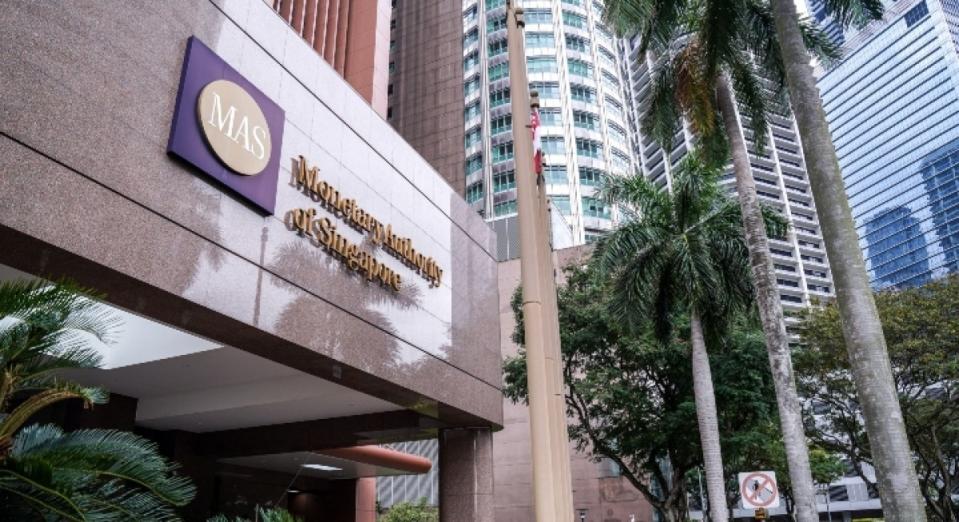RHB expects MAS to increase slope of the S$NEER path to 2.0% at upcoming April meeting

DBS, on the other hand, sees MAS’s current policy as tight enough and that it is likely to pause tightening.
RHB Bank Singapore’s senior economist Barnabas Gan is expecting the Monetary Authority of Singapore (MAS) to tighten its monetary policy further at its Monetary Policy Statement (MPS) meeting. The next semi-annual meeting will take place on April 14.
In his note dated April 11, Gan is forecasting MAS to increase the slope of the Singapore dollar nominal effective exchange rate (S$NEER) path to 2.0% from the current 1.5%. The central bank is also expected to keep the width and the level of which it is centred unchanged.
The strong appreciation of the S$NEER to 1.0%, above its mid-point, is one of the three drivers behind Gan’s forecast. “In recent weeks, the swift rally in the Singapore dollar (SGD) suggests limited headroom for the S$NEER if needed to anchor inflation expectations, assuming that the [width of the band] is +/- 2.0%.”
The other two drivers include inflation pressures that may remain elevated for the rest of the year, as well as the higher interest rates in developed economies seen year-to-date (ytd).
“We forecast the Fed to raise its benchmark rate to 5.25% – 5.50% in 1H2023, while our global asset allocation is overweight equities, market-weight fixed income, and underweight cash. Our view is that the recent fallout of some of the US regional banks is not systemic but idiosyncratic,” he says.
“We believe a recentring of the S$NEER in April 2023 will not send a firm response to anchor inflation expectations. This is due to the relatively soft S$NEER since the start of this year when the S$NEER was below the <1.0% above midpoint handle,” Gan adds.
Furthermore, the last three sessions of recentring were made when the S$NEER was “significantly above the midpoint, specifically in April 2022 and October 2022.
“As of the time of writing, the S$NEER is trading at +1.05% above the midpoint. Thus, a recentring move may not be as aggressive as the past moves,” says Gan.
With the expected tightening in April, Gan estimates that the move will anchor Singapore’s core inflation to around 2.5% by 4Q2023.
In his report, he further explains that the RHB team met with policymakers in March and sensed that economic conditions remain appropriate for a tighter monetary policy in April.
“Officials were generally more optimistic about Singapore’s economic growth in 2023 amid expectations that inflation will remain elevated for some time,” he explains.
He adds that Singapore’s core inflation rose by 5.5% in February, which is significantly above MAS’s view, where the central bank stated that a core inflation of “just under 2.0… is consistent with overall price stability”.
“With the MAS opting to recentre the S$NEER in October, against our forecast for a ‘double-tightening’ move, we now think that the steepening of the S$NEER gradient is long over-due and will be triggered in April,” he states.
Singapore’s GDP
The economist has also estimated Singapore’s gross domestic product (GDP) to come in at 0.8% y-o-y and 0.4% q-o-q with Singapore avoiding a technical recession in 1H2023. Gan’s estimates come ahead of MAS’s GDP release on April 14.
“Our full-year headline and core inflation forecasts are 4.0% and 3.8%, respectively, with both measures declining to below 3.0% by 4Q2023,” he says, adding that this may be the last tightening move by the MAS in the current cycle to “completely anchor core inflation trends into the end of this year”.
“The MAS has tightened policy for the last five consecutive meetings and, through these sessions, has lifted the S$NEER gradient to the current estimated level of 1.5% from 0.0%, and recentring the S$NEER three times,” he points out.
DBS says MAS likely to pause its tightening at April meeting
DBS Group Research economists Irvin Seah and Chua Han Teng believes the MAS will pause its tightening at its coming April meeting.
Its current policy is already delicately balancing the risks between inflation and growth, they write in their April 5 report.
“Having tightened monetary policy by five times since October 2021 and earlier than other central banks, the policy is tight enough to address still-elevated inflation, at a time when growth faces headwinds from a challenging global external environment,” they say.
See Also:
Click here to stay updated with the Latest Business & Investment News in Singapore
RHB lowers Manulife US REIT's TP to 40 US cents after sale of Tanasbourne
Hospitality S-REITs entering 'multi-year upcycle' with 'travelanche' of Chinese travellers: DBS
'Buy' data centre S-REITs while they are under pressure from distressed tenant: DBS
Get in-depth insights from our expert contributors, and dive into financial and economic trends

 Yahoo Finance
Yahoo Finance 